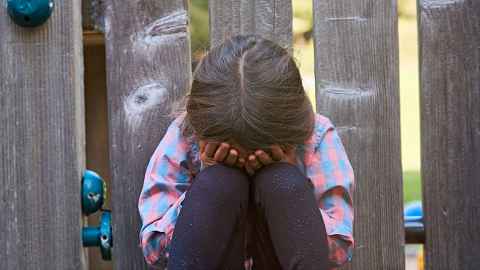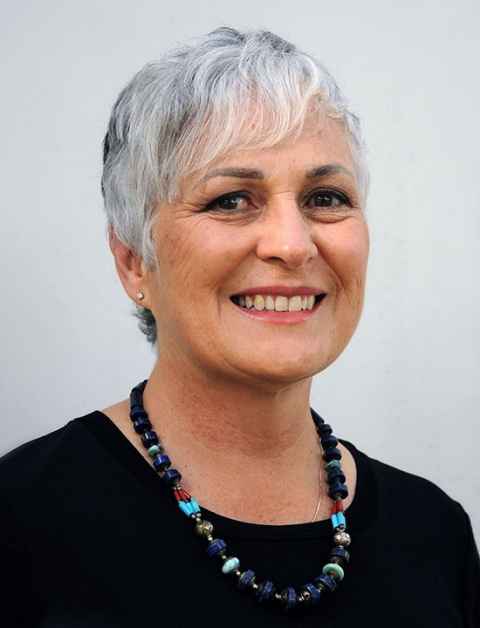He mahi waiwai tō ngā kura o te rapu i te tūkino tamariki
17 September 2021
Ka pēhea e taea e ngā kura te whakarite pai i ngā kaimahi ki te āhukahuka i ngā tohu mēnā e whakapae ana rātou e tūkinotia ana, e takakinotia ana rānei tētahi tamaiti?

Ka arotahi te tuhinga whakapae a Briar O'Connor, kaitono tohu kairangi o Waipapa Taumata Rau ki te āhua o te huringa o te kaupapahere tiaki tamariki mai i te mahi 'tohu pouaka' noa, ki tētahi wāhanga noa o ngā mahi o ia rā, o ngā kaiako kura katoa.
Mai i ana rangahau, i uru atu hoki tētahi kura motuhake hei take rangahau, i kite ia, ahakoa i whāia ngā hipanga ā-ture katoa, ko te whakaurunga - 'anei te kaupapahere, ā, koinei i whaitake ai' - te tīmatanga noa iho.
"Ko te mahi i tēnei mahi tino tuatini, uaua hoki, he mahi pakeke," tāna kī. "Ko te mōhio he aha ngā tohu, me pēhea te rapu māramatanga rehurehu o tāu e kite ana, te mārama rānei he aha tā te tamaiti e ngana ana ki te whāki ki a koe, me aha hoki koe, me whai mōhio, me tautōhito hoki. E kore e tutuki i te mōhio noa ki te kaupapahere."
Ko tētahi rapanga wawe, ā, 'he tīmatanga pai rawa', e whakapono
ana ia, kia whai pūtea kāwanatanga ngā kaimahi kura katoa ki te whakauru ki tētahi, neke atu rānei, akoranga tuihono (te kaupapa o Child Matters, o Tiakina ngā Tamariki rānei) ki te āhukahuka me te urupare ki te tūkino tamariki.
He aha he mahi mā ngā kaiako e pokea ana, me ētahi atu kaimahi kura ina kite, rongo rānei i tētahi mea āwangawanga?
"Me mōhio rātou he mahi māia tonu te whāki a te tamaiti ki a koe; e arohanui ana ngā tamariki ki ōna mātua, ā, me te whakapono anō he tangata pai rāua. Me whakatītina i te tamaiti i rongo rātou i a ia, e whakaponotia ana āna kōrero, ā, kāore e noho muna ngā mōhiohio kua whākina, taihoa te whiu pātai toronga, ā, me tuhi i ngā kōrero a te tamaiti."
E nui tonu ngā mahi pai a te kura e rangahautia ana e ia.
"I ia hui, hei tauira ake, tērā tētahi take i runga i te rārangi take ko 'ngā tamariki take āwangawanga', nā tērā i noho māori ai i roto i te kura, kaua ko te kite noa engari ko te whakahua mēnā he take āwangawanga i kite ia."

Ko te whakamahi i te Normalisation Process Theory (NPT) - e tiro ana ki te whakatinanatanga, te tāmautanga me te pāhekohekotanga o ngā huarahi hou ki tētahi whakahaere - hei anga mō tana rangahau, ka tiro ia ki ngā herenga o te Children's Act 2014. Ko tana manako nā te kaha tāmau o te āhukahuka me te urupare ki te tūkino, tatū noa ki ngā mātai pirihimana auau mō te hunga e mahi ana ki ngā tamariki, hei tauira, ka memeha ki roto i ngā mahi o ia rā i te kura.
Engari kāore i pēnei.
"Ki te whakatinana i tētahi kaupapahere tiaki tamariki i te kura, me arotahi motuhake te poari o te kura, ko te poari hoki te kaituhi i runga anō i ngā tohutohu mātanga, me whakairi ki tētahi wāhi e kitea ai i runga i te pae tukutuku, me whakauru ki ngā whakaurunga kaimahi hou katoa, me whakahou ia toru tau hoki. Ā, me mōhio ngā pākeke katoa kei runga i te papa o te kura, tae atu ki ngā manuhiri, kei a wai te haepapa matua o te tiaki tamariki," hei tāna.
ko tētahi kōrero e rangona nuitia ana e au i ngā kaiako me ētahi
atu ko tēnei 'engari ka aha mēnā i te hē ahau?', ko taku whakautu ki a rātou, "engari ka aha mēnā i te tika koe?"
E kore e manakotia ana ngā kaiako pukumahi, ngā kaimahi whānui o te kura, tae atu ki ngā kaiāwhina, kaimahi tari, kaitiaki papa, ko te nuinga e noho pai ana ki te kite i ngā tohu o te tūkino, o te takakino rānei, ki te āta urupare ki ia tamaiti ka kore ana e whai whakangungu, otirā kāore hoki he moni, he wā rānei mō taua mahi."
Kāore he tukanga whakature, hora whānui rānei mō te whakangungu i ngā kaimahi kura katoa ki ngā kaupapahere tiaki tamariki, ahakoa te mea kei roto i tana White Paper o te tau 2013, i kī te kāwananga a Key, he waiwai tēnei, ā, ka whakanaketia.
"Kua waiho mā tēnā kura anō hei hanga, hei tiki atu rānei i tētahi," te kī a Ms O'Connor, "ā, e haepapa ana mō te whanaketanga o tā rātou ake kaupapa whakangungu, me te whakahou atu ki tua o te mahi tiki pouaka. E whakapono ana ahau he koretake rawa tēnei, ā, kāore e puta he painga ki ā tātou tamariki i tētahi whenua e whai ana i ngā tatauranga kino rawa mō te tūkino whānau puta noa i te OECD."
Ko tētahi rapanga wawe, ā, 'he tīmatanga pai rawa', e whakapono ana ia, kia whai pūtea kāwanatanga ngā kaimahi kura katoa ki te whakauru ki tētahi, neke atu rānei, akoranga tuihono (te kaupapa o Child Matters, o Tiakina ngā Tamariki rānei) ki te āhukahuka me te urupare ki te tūkino tamariki.
"Nō tātou katoa te haepapa ki te urupare atu ki ā tātou tatauranga whakawehi o te tūkino tamariki, ā, ko tētahi kōrero e rangona nuitia ana e au i ngā kaiako me ētahi atu ko tēnei 'engari ka aha mēnā i te hē ahau?', ko taku whakautu ki a rātou, "engari ka aha mēnā i te tika koe?"
Schools have vital role to play in detecting child abuse
How can schools best equip staff to recognise the signs if they suspect a child is being abused or neglected?
University of Auckland PhD candidate Briar O’Connor’s thesis focuses on how a child protection policy can go from being a ‘tick-box exercise’, to a normalised part of everyday routine for all school staff.
From her research, which included a specific school as a case study, she found that while all the required legal steps had been followed, induction – ‘here is the policy and this is why it matters’ – was only the beginning.
“Dealing with this very complex and difficult area is hard,” she says. “Knowing what to be looking out for, how to read between the lines of what you observe, or what a child might be trying to tell you and what you should do about it, takes knowledge and practice. It’s not enough to know a policy exists.”
So what can overworked teachers and other school staff do if they see or hear something concerning?
“They should know if a child discloses something it takes a lot of courage; children love their parents and want to believe they’re good people. They need to reassure the child that they’ve been heard and believed, tell them the information can’t be kept a secret, resist asking further probing questions, and document what was said.”
Her case study school was doing some things very well.
“At every meeting, for example, they had a ‘children causing concern’ item on the agenda, which made it a normal part of being an adult in that school to not only notice but mention anything that might be worrying.”
They need to reassure the child that they’ve been heard and believed, tell them the information can’t be kept a secret, resist asking further probing questions, and document what was said.
Using Normalisation Process Theory (NPT) – which looks at the implementation, imbedding and integration of new ways of doing things into an organisation – to frame her study, she examined the requirements of the Children’s Act 2014.
Her hope was that things like recognising and responding to abuse, along with regular police vetting for anyone who works with children for example, would have become so embedded in schools that they’ve almost disappeared into normal school life.
However, this wasn’t really the case.
“To implement a child protection policy in a school takes a specific focus by the board of trustees, who must write it with expert guidance, put it in a visible place on their website, introduce it to all new staff at induction, and revise it every three years. And all adults on school grounds, including visitors, should know who holds the key responsibility for child protection,” she says.
“Busy teachers and wider school staff, including teacher aides, office and grounds staff, many of whom may be better placed to notice signs of abuse or neglect, can’t be expected to respond to a child carefully without training, for which there is seldom any time or money.”
There are no regulated, widespread processes for training all school staff in child protection policy requirements, despite the fact that in its 2012 White Paper, the Key government said they were essential, and would be developed.
“Each school is left to create or source their own,” says Ms O’Connor, “and is responsible for developing their own training and revising beyond the point of tick-box compliance. I believe this is grossly unreasonable and doesn’t serve our tamariki in a country where we have some of the worst domestic violence statistics in the OECD.”
An immediate solution and ‘great start’, she believes, would be for government funding for all school staff to do at least one of the existing online courses (Child Matters, or Safeguarding Children Initiative) in recognising and responding to child abuse.
“We all have a responsibility to do something about our appalling child abuse statistics and while something I often hear from teachers and others is, ‘but what if I’m wrong?’, my answer is, “but what if you’re right?”
Media contact
Julianne Evans | Media adviser
M: 027 562 5868
E: julianne.evans@auckland.ac.nz